On December 20th, The Witcher series debuted on Netflix, where we are introduced to a fantasy world full of monsters, magic and political intrigue. Based on Andrzej Sapkowski’s books, the series bears many similarities to other fantasy works, such as Game of Thrones. But because it’s a work based on Scandinavian and Eastern European legends, many of the designs used on these characters’ armor and weapons don’t look like what we’re used to seeing in medieval fantasy works like The Lord of the Rings.and the movies of King Arthur. This is because the latter often use a Central European notion of the Middle Ages, focused almost exclusively on weapons and armor used in France, England and Germany.
To better understand why The Witcher’s clothes, armor and weapons look so different from what we’re used to, Nick Jeffries, the series weapons supervisor, tells us where the inspiration for the different weapons and armor we see throughout the episodes came from.
Understanding The World Of The Witcher
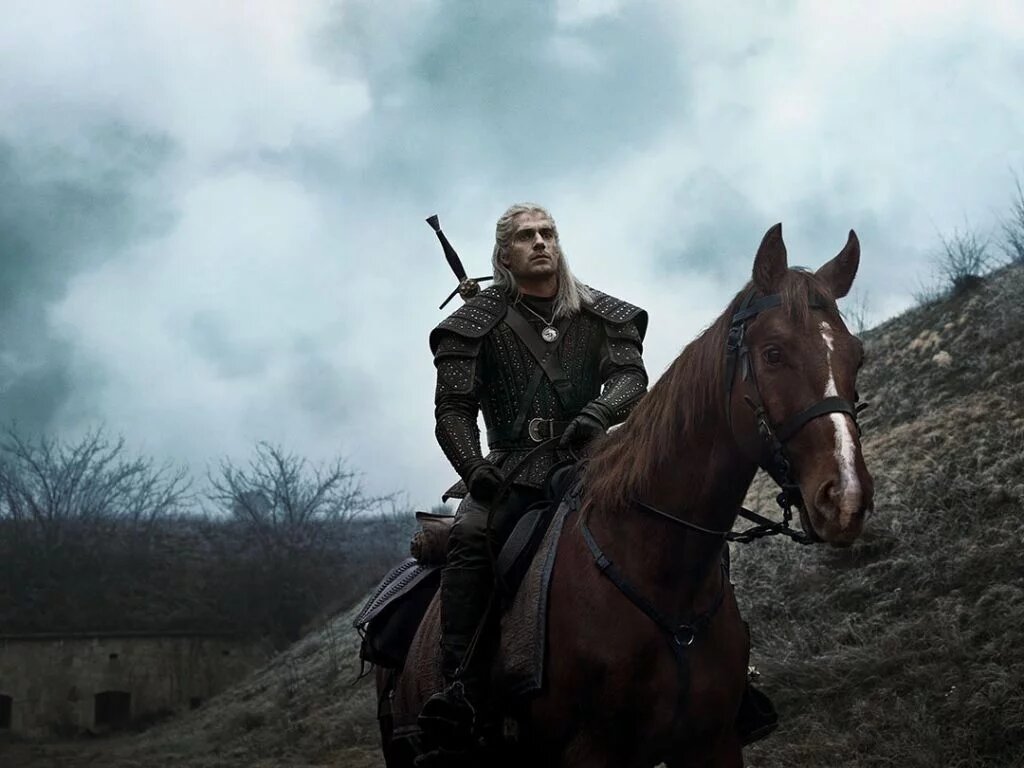
In general, the world where the Witcher series takes place can be compared to late-medieval Europe, somewhere between 1400 and 1450 AD Like the actual period of the European Middle Ages, the world of the series is brutal and full of deaths – whether by war, disease or famine. Life in this period has never been easy for anyone, and in the series, surviving is even more complicated, as the presence of monsters poses a new kind of threat to the citizen who lived in the villages and castles.
Thus, most of the weapons and armor used in the series are based on real weapons and armor that were used by European countries in the fifteenth century. But as this is a fantasy series, there was the freedom to get out of this period a bit, and Jeffries reveals that at various times he went back up to 1000 years in time to seek inspiration for the pieces used by the characters.
Overall, everything the characters wear in the series has been based on museum pieces and reference books mixed with a touch of Jeffries imagination, who needs to rethink these real medieval pieces for a world where monsters and magic were commonplace. For this reason, there was a freedom to seek inspiration not only in the medieval European period, but also in India, the Middle East and northern Africa. This influence of the East is mainly seen in the clothes of wizards, as they are beings who can live for thousands of years because of their control of magic, and so it makes sense that their clothing is inspired by civilizations older than the European.
Arming the armies
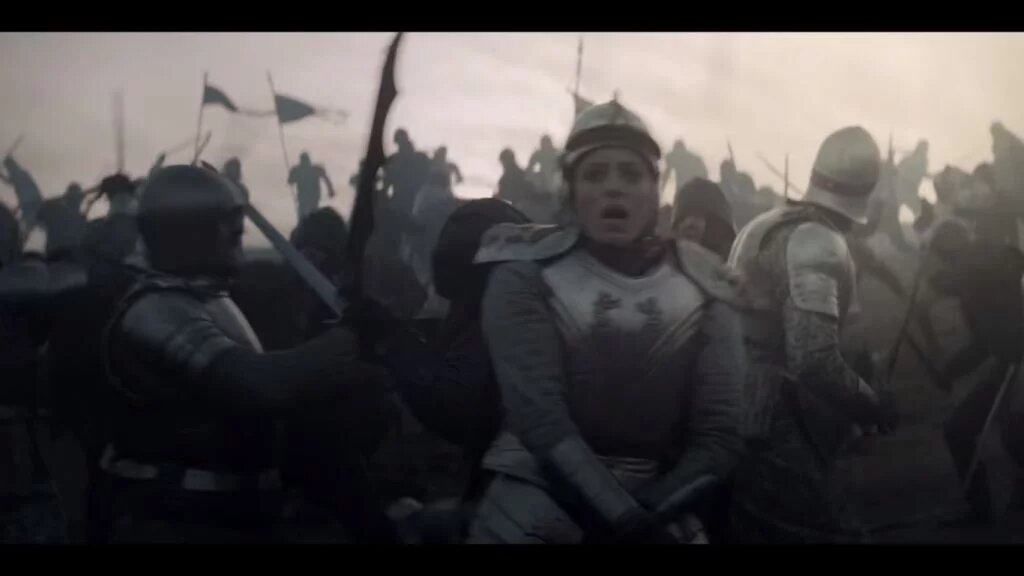
As with any medieval story, The Witcher has many different kingdoms and peoples, each with its own tradition and culture, and therefore its own style of dress.
For example, Cintra and Temeria – two of the largest northern kingdoms that appear in the first season of the series – are cultures that look exactly like what comes to mind when we think of the “Middle Ages.” That’s why both have their equipment all inspired by what could be found in a 15th century European castle. The warriors of these kingdoms wear classic knight armor, with a classic long sword (with blade on both sides and a piercing tip) and a rod weapon (usually a spear or halberd). The warriors of these kingdoms were created to be classic medieval knights, so they are the ones who cause the least strangeness when they appear on screen.
This same type of design was also used for the warriors of Kaedwen, another of the great northern kingdoms. But as this is a kingdom in a colder region, Jeffries decided that a good touch to indicate this would be to incorporate a greater use of furs in armor design as a way of showing the public that these are warriors used to fighting in the cold.
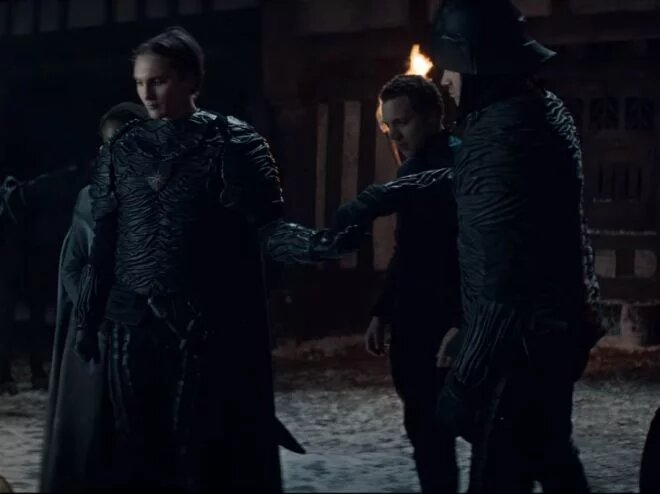
The same cannot be said of the warriors of Nilfgaard. This kingdom, known to always be at war and to have an unstable political situation, where the King is always being overthrown by a coup d’état, has no cavalry order, and his army is not made up of disciplined warriors, but of mercenaries after fortune – basically anyone who wants to earn money by killing people and looting cities is accepted into Nilfgaard’s army.
For this reason, soldiers use as weapons a knife, a falchion (a half-curved, single-edged sword created during the Crusades as a response of the European knights to the scimitars of the Middle Eastern warriors), a glaive (a weapon with a spear-like stem, but which instead of an arrow-shaped tip has a falchion-like blade) and a huge axe that can be used to cut people in half.
The main difference of a falchion sword with a classic knight sword is in the blade: while the classic sword has a straight and robust blade, cut on both sides and an “arrow” shaped tip made for easy drilling. , the falchion has a slightly curved blade with cutting edge on one side only – and is therefore not recommended for stabbing blows, since on one side of the blade is not cut the sword does not slide easily out of the enemy’s body.
In order to cut both sides of the blade, a larger amount of metal must be used to make the sword, which makes the knight swords very heavy. So each of these weapons was made for a specific purpose: while the knight’s sword is great for facing other knights, as the stockpile tip and double blade make it capable of piercing even full metal armor, the Falchion is a lightweight weapon designed for cutting movements, giving the user greater handling speed when facing opponents of lighter armor (such as those made from leather) or without any armor.
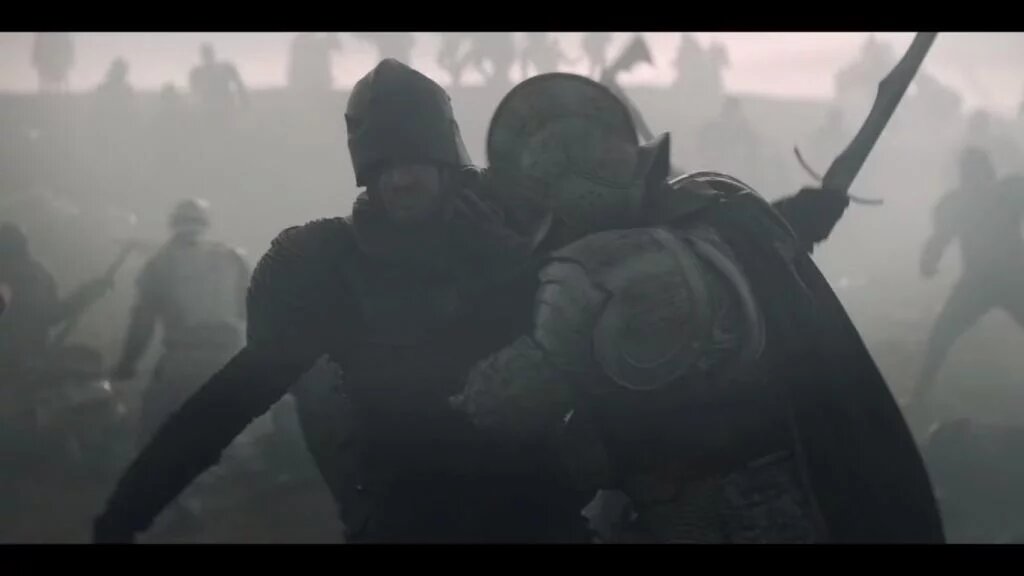
Therefore, these weapons are perfect for Nilfgaard’s army, which is an invading force that does not respect civilians and kills any enemy soldier, woman or child who passes in front of them. This more brutal nature can also be seen in their armor, which is all painted black and has a texture that somehow resembles the skin of a monster.
Another people with a very different clothing and armor design are the Skellige warriors. Being a warrior people with a lot of nautical experience, a clear inspiration for them is the Vikings’ outfits – a path that was followed by The Witcher 3 itself. But for the series, Jeffries decided to bring more elements from the late 18th century, when Europe was at the height of its naval technologies. So that was the great inspiration for Netflix’s work: using late 18th century navigator equipment and reinventing it to look like something created in the Middle Ages. Thus, the warriors of this region wear clothing that resembles pirate windshields, but readjusted to something that made sense with the sewing materials and techniques of the Middle Ages.
And the same thing for the weapons they carry: a stylized version of a cutlass (a short saber often used by pirates), a hand axe and a pike (a lightweight, short-stemmed spear perfect for throwing, which can be used both as a weapon and for fishing). All weapons also have naval details, such as fish scale handles, the pommel in the shape of a fish tail, to make it clear that these are people living on and off the sea.
Arming the characters
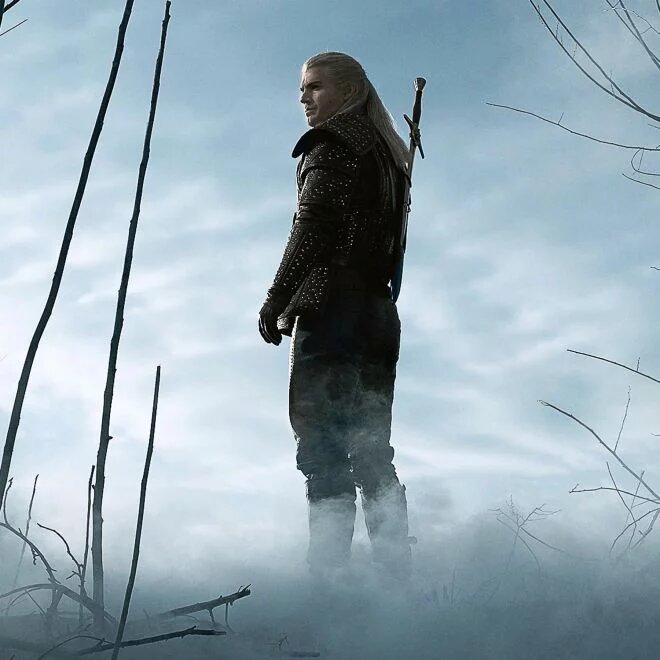
But of course, not all warriors in The Witcher are ordinary soldiers in an army, and those who appear most on screen need equipment that sets them apart from the rest of the warriors.
And the most important of these is undoubtedly the wizard Geralt of Rivia. The protagonist, and greatest warrior in the series, carries five weapons in his arsenal: two swords, a chain, an English punch and a dagger. The two swords are Geralt’s main weapons and what marks him as a wizard, one of steel (in fact, an alloy of steel developed from a mysterious metal taken from a meteorite, which makes the weapon more resilient and sharp) than a common steel sword) that the wizard uses when fighting with humans or elves; and a silver sword, which is the wizard’s weapon used to hunt monsters, since all supernatural creatures of The Witcher are vulnerable to metal.
Both weapons are known as “one-and-a-half swords”, or by the less technical term “bastard sword”. They get their name because, like a bastard child, they don’t seem to fit anywhere, being too heavy and ungainly to fight with in one hand, and become very light and prone to erratic blows if brandished with. both hands on the handle. Because of this, only the most skilled warriors can use this type of weapon, and the fact that Geralt carries two of these marks him as an elite swordsman for anyone who knows about fencing.
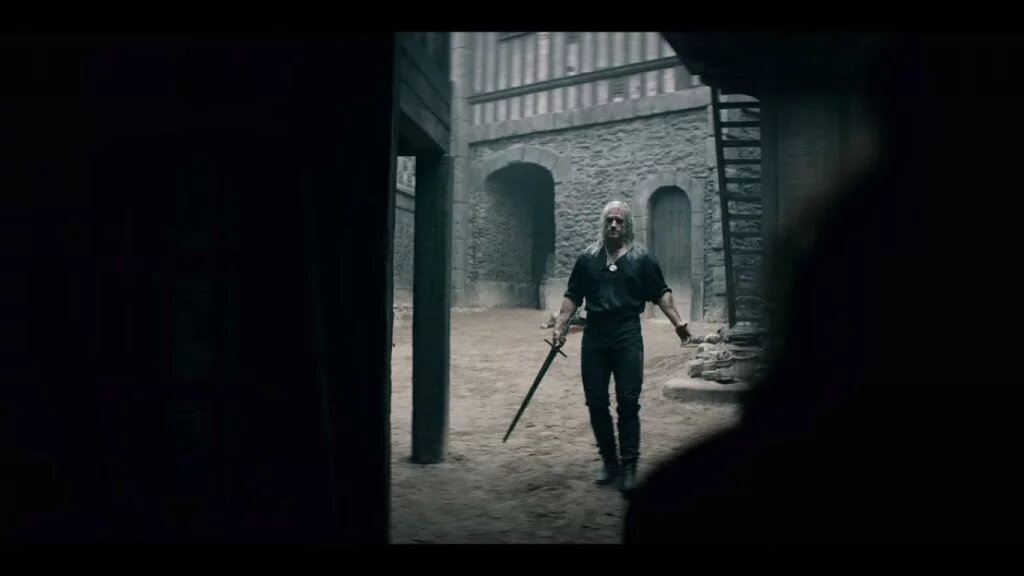
In addition to the swords, we also see Geralt using a chain and an English punch to combat a Strike in one episode. While the chain does not have any kind of striking feature, being a simple silver chain that it uses to trap monsters, the English Punch is one of the wizard’s most beautiful weapons, and it has engraved the face of a wolf on each of its buds – a special touch made to match Geralt, who is also known as the White Wolf, and of which Jeffries feels very proud. The character also uses a dagger, which usually carries hidden inside the sleeve of the shirt or boot, which uses as a last defense option. The dagger has some bevels in the blade that can be used by the wizard to parry a sword strike and, with a bending motion, force the blade until it breaks,
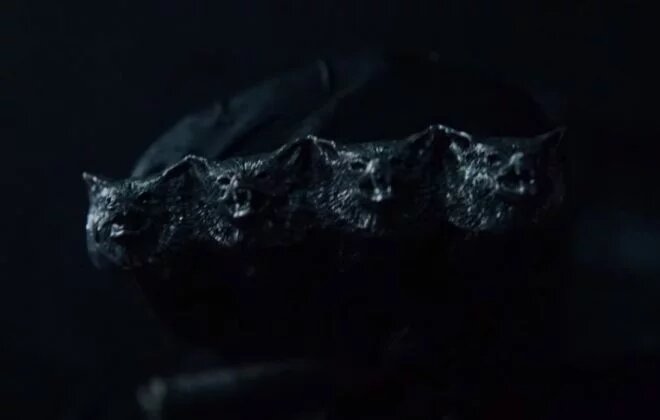
Another interesting character is Renfri, who appears in the pilot episode of the series and is a kind of more violent version of Snow White. Renfri basically uses two very similar weapons: a bone-wielding dagger and a ruby in place of the Snitch, and a short sword, about 23 inches long, of the same design. Because Renfri is a fighter who uses more of her speed than physical strength, the short sword allows her to use a few different strokes that let the blade flow freely and take advantage of this movement to increase the force of the next blow – something that it would be impossible to do with a larger blade that would need to be stopped before completing the entire bow if the swordsman does not want to be injured with a blow of his own sword.
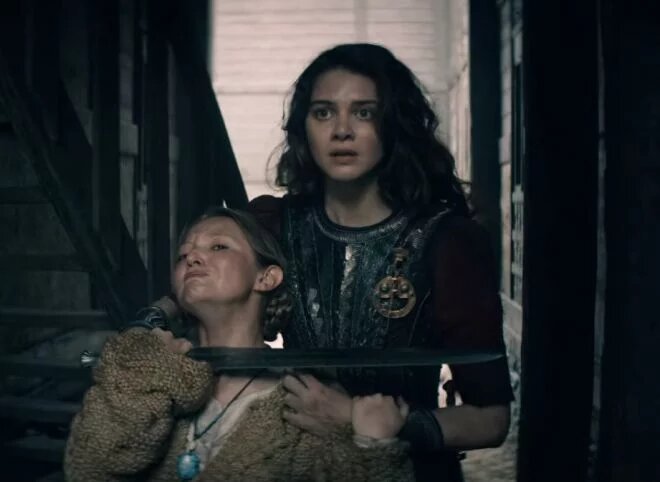
Queen Calanthe of Cintra is also featured in the series, who is important to both Geralt’s and Ciri’s. Despite being a warrior queen, Calanthe does not have much different equipment than his soldiers, and carries a sword and dagger common to all the warriors of that kingdom. The only difference in her outfit is her armor, which has a greater detail, but just enough to make it clear that on the battlefield, she’s a person in charge. Another thing Jeffries likes a lot is that she wears a battle helmet that hides her face. The point is that during a fight no one will see that it is the queen there, which puts her on an equal footing with all other warriors who also risk their lives on the battlefield.
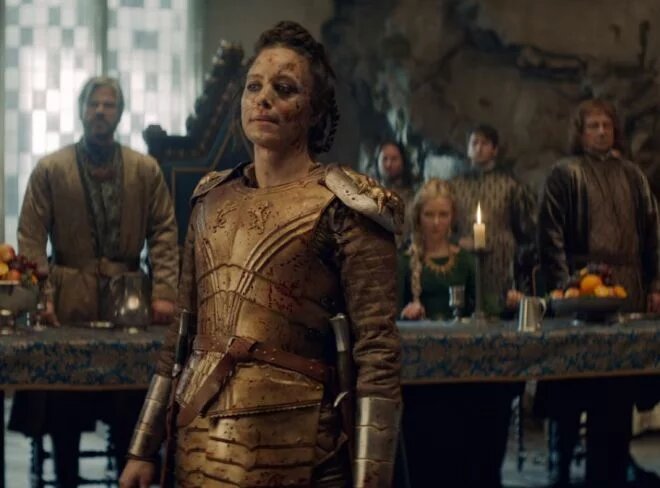
Other interesting characters are the Zerrikanian bodyguards Tea and Vea, who use very different swords from all the other characters in the series. Their sword has a leaf-shaped blade (instead of straight, the blade has a kind of “guitar body”, with the blade having a part in its center that is narrower than the rest), with two human heads on the apple – one angry and one calm – and two dragon heads at each end of the guard – one with its mouth open, as if it were expelling fire, and the other with its mouth closed.
Their sword does not have a very large blade, and they were designed to be quickly pulled from the sheath they carry on their backs, so that the movement to draw the weapon already works as the first blow, catching their opponents by surprise and ensuring the advantage in battle. Because they are from the mysterious kingdom of Zerrikania, their armor is also quite different from what we are used to seeing in medieval stories, being inspired by those worn by Egyptian warriors.
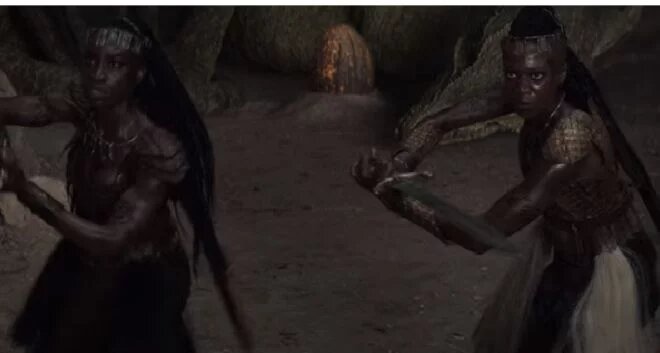
As we can see, The Witcher’s fantasy world is a huge amalgam of varied cultures, belonging to civilizations of different parts of the world, fleeing from that kind of Eurocentric setting that is so common to such works. This diversity only serves to make the universe of the series even more magical and complete, and any fan of such content can now access all of the more than eight hours of first season content available on Netflix.